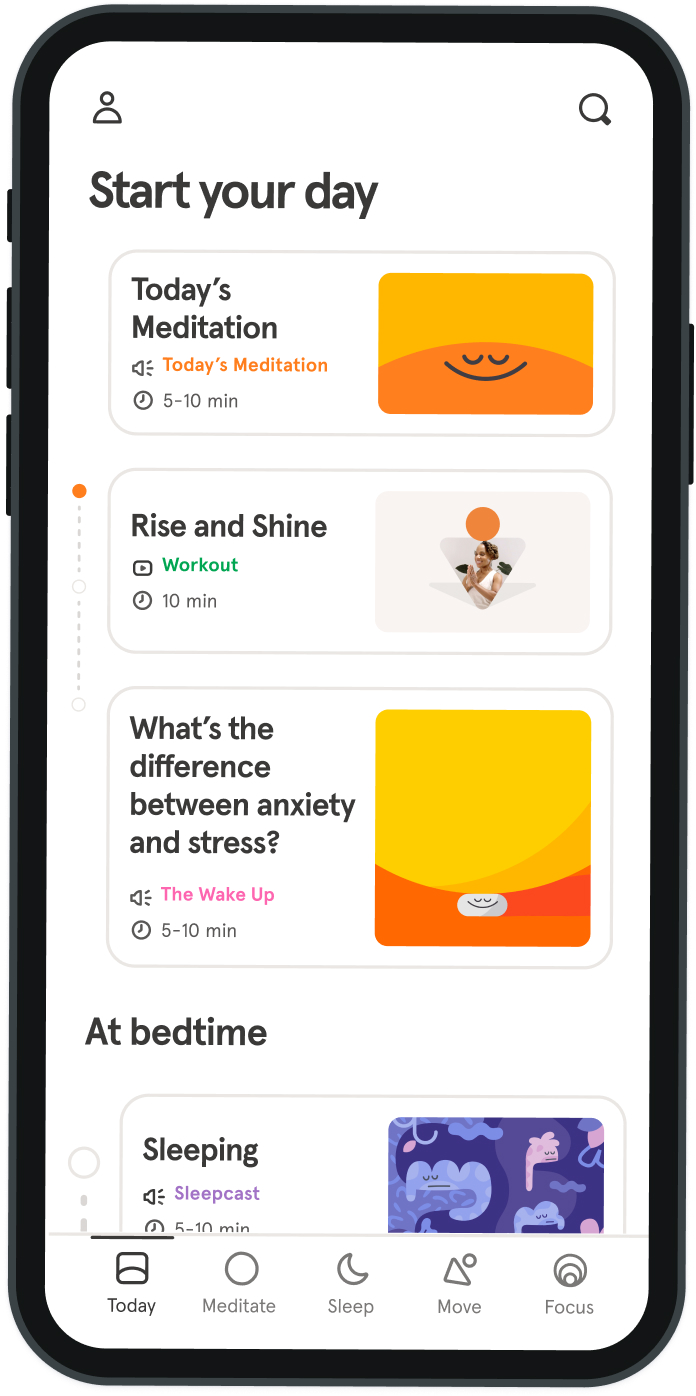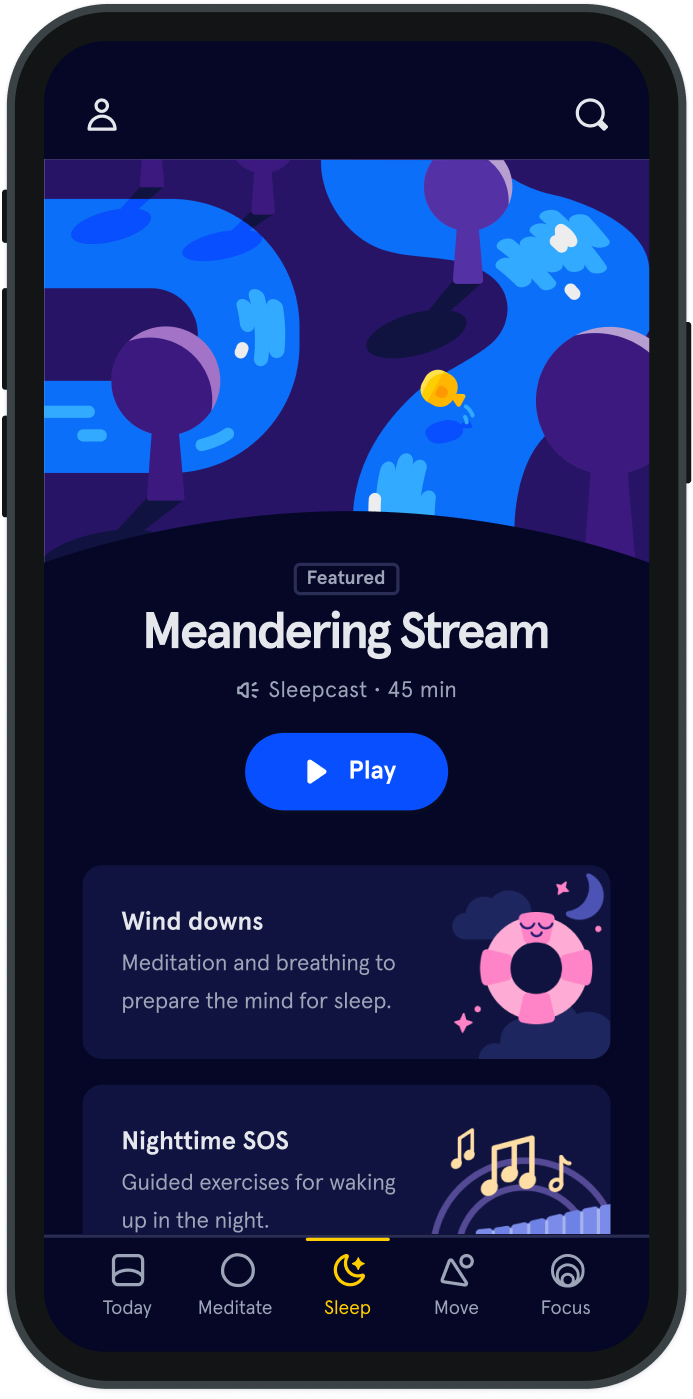Stickers saved my life
“Can we get the check, please?” I'm at a cafe on Fillmore Street in San Francisco, eating lunch with my sister-in-law, Tricia. As soon as the words leave my mouth, I realize that our waiter took our signed credit card receipt ten minutes ago. The espresso machine hums in the background as dishes clank into the sink. I feel lightheaded, notice sweat glistening on my fingers, and mentally add Tricia to the list of people (myself included) who think I am losing my mind.
I wouldn’t blame her. Lately, I feel out of my body, lost, and totally unaware of my actions. My arms, legs, and hands move—driving the car, signing the check, nodding my head like I'm listening to someone—but my mental awareness is wrapped in anxious thoughts instead of reality: "My throat hurts when I swallow; is it esophageal cancer?” My fight-or-flight system is stuck switched “on,” constantly scanning the environment for threats. At night, I awake every hour in a pool of sweat. And over the course of the next year, I try everything from the traditional (pills, therapy) to the bizarre (ecstatic dance, hyperventilation) to soothe my anxious soul. But ultimately, it is the most simple method that saves me. “You don’t have to wait until the end of the day to relax, you know,” my therapist, Julie, says during one of our sessions to tackle what she says is a panic disorder. Her kind eyes meet mine with compassion, and she suggests I read “The Worry Trap” by Dr. Chad Lejuene. I do. The book is full of short exercises to reduce anxiety. I try many of them. Some—like a progressive muscle relaxation, slowly squeezing and releasing all of the major muscle groups—do help, but are difficult to keep up with over time. Others, like taking a cold shower and “leaning into the icy discomfort,” sound worse than the panic itself, and I avoid them altogether. There’s no magic bullet for anxiety, I’ve learned. But one exercise sticks with me.
You know those little primary-colored, circular stickers? The ones kindergarten teachers and frustrated parents use to coerce their kids into compliance—to perform myriad tasks, from making the bed to not smacking a classmate with a plastic truck? The book suggests placing those little stickers in lots of places where you will see them throughout the day. And each time you do, you're supposed to take a big breath in through your belly and then relax as you exhale through your nose. This type of deep, diaphragmatic breathing (rather than the shallow, chest breathing I've been doing) triggers the parasympathetic nervous system, or what's better known as the rest-and-digest system. (Or, as I like to call it: relax, it's not Armageddon mode.) For anxious humans, the brain needs frequent reminders that it is in Starbucks, not the Serengeti. I decide on orange stickers, which remind me of a chart my mom made for me when I was 5 to reward me for not wetting the bed. I put one on my laptop, one on the back of my cell phone, and one on the back of my daily planner. Heck, I’d have tattooed one permanently on my forehead if I thought it would help. I add a mental note that when I see a sticker, I will also feel my feet on the floor, which helps ground me further and moves me out of my head and into my body. “What’s that sticker for?” a friend asks. I’m simultaneously embarrassed and relieved. I feel like that 5-year-old learning to sleep through the night with dry sheets, but am ecstatic to remember that I’m not required to continue clenching my jaw for the rest of the day. “Oh, that’s nothing,” I say as I remember to feel my feet on the floor and unclench my neck. Sometimes, my stickers make me feel special—but not in a good way, like when your second-grade teacher scribbles a little note in your writing journal. More like, what kind of a grown human needs a reminder not to clutch the steering wheel until her fingers get sore? But slowly, this see-sticker-breathe-repeat method works. And each time I see an orange circle, I am relieved to remember that taking a deep breath is always an option. "Just relax," it says. And I do.
And over the course of the following year, as I take one deep breath after another (and on some days more deep breaths than shallow ones), I don’t need those reminders so much anymore. Deep breathing becomes a pattern that I choose naturally, like a path marked through thick snow that soon becomes a noticeable, deep-grooved trail. Now that I no longer face the same anxiety on a daily basis, more like a just-when-a-major-crisis-hits basis, I still come back to this sticker practice at times. It reminds me that a trip to the spa of deep breathing is always ready and waiting for me; it’s free, easy, simple—exquisite in its portability—and best of all, effective. Sometimes, I still feel uncomfortable that I need a reminder to breathe deeply. (“Oh, my 8-year-old must have put that there,” I laugh. “Kids!”) I’d rather be naturally unflappable, than jolt upright and jump out of my skin every time the doorbell rings. But I’m slowly learning to embrace my whole self—hypervigilance and all—one sticker at a time. Acceptance is integral to the mindfulness practice, embracing things just as they are (here comes the hard part) without judgment. _[_Editor’s Note: struggling with that part? Try the Acceptance pack.] We all need reminders—for everything from returning a library book to reconsidering that third cocktail. (A friend once put a calendar reminder in her phone to produce an alert on Saturday at midnight that says, “Go home!”) And this, too, is part of the lesson. Letting go of perfection, the need to do it all without any help, the gripping: physical, emotional, mental. Sometimes, we just need a little nudge to show us that taking one deep, slow breath and feeling the soles of our feet on the floor is always an option. Serenity always awaits; we just have to remember that it’s there.



Be kind to your mind
- Access the full library of 500+ meditations on everything from stress, to resilience, to compassion
- Put your mind to bed with sleep sounds, music, and wind-down exercises
- Make mindfulness a part of your daily routine with tension-releasing workouts, relaxing yoga, Focus music playlists, and more
Meditation and mindfulness for any mind, any mood, any goal

Stay in the loop
Be the first to get updates on our latest content, special offers, and new features.
By signing up, you’re agreeing to receive marketing emails from Headspace. You can unsubscribe at any time. For more details, check out our Privacy Policy.
- © 2025 Headspace Inc.
- Terms & conditions
- Privacy policy
- Consumer Health Data
- Your privacy choices
- CA Privacy Notice
